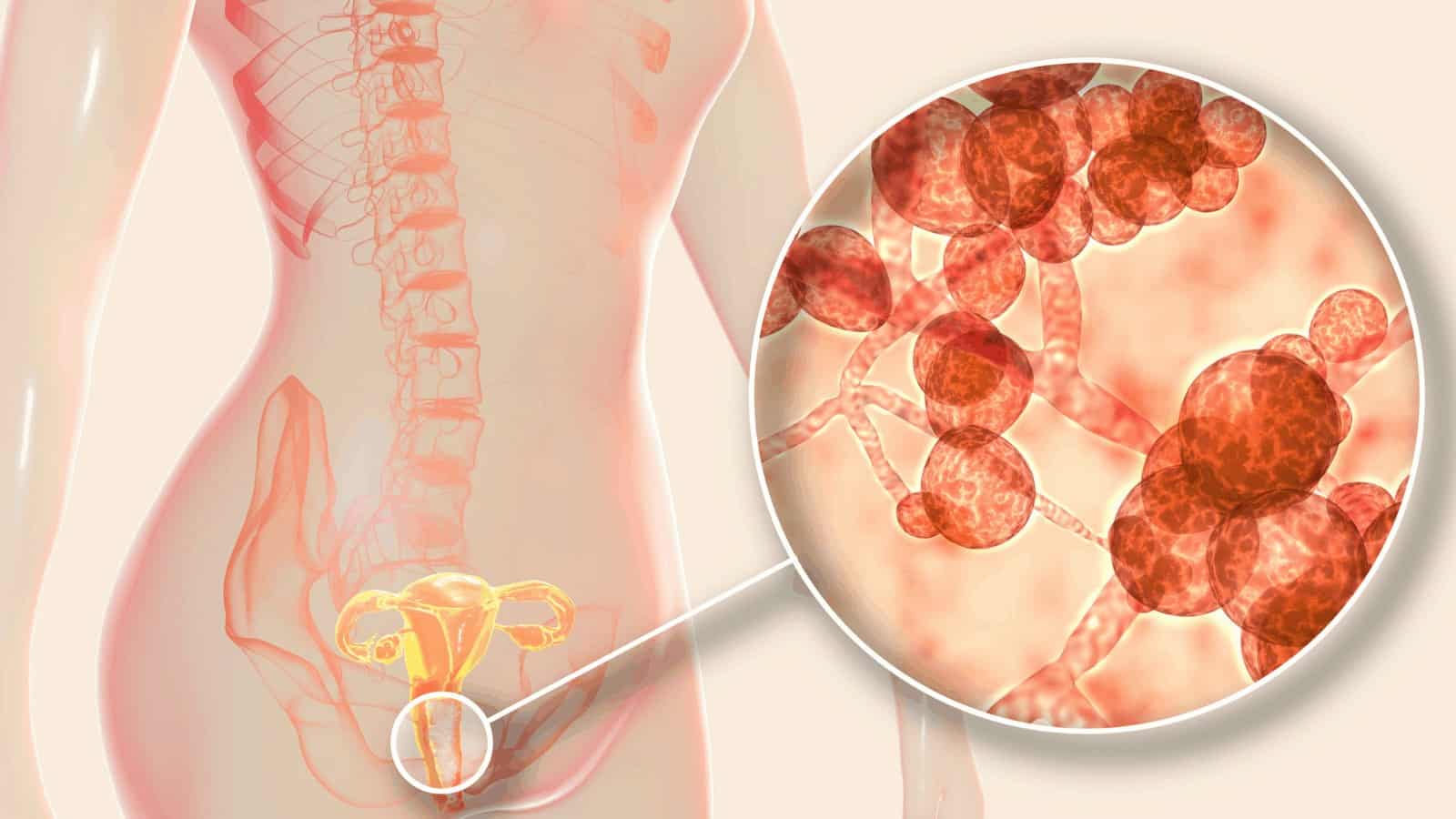Did you know that you may have an overgrowth of yeast in your body called candida? Knowing the symptoms can help you find a quick diagnosis.
According to Science Based Medicine, nearly 90 percent of the population has this yeast, but it doesn’t always cause problems. It can live on your skin or inside your body. It’s commonly found in places like the gut, mouth, or the gentile area.
In some cases, this yeast can grow out of control and affect major organs, such as your heart, lungs, or brain. According to the Center for Disease Control, this yeast spreads very quickly and is commonplace among hospitals and nursing homes. How do you know if you have this type of yeast in your body, and what can you do about it?
Recognizing Candida Symptoms
Since the yeast can exist without causing problems, you can have it, and not everyone knows it’s present. For others, the candida makes its presence known when it starts to grow and multiply. It can turn into an infection, which is called candidiasis.
Thankfully, it’s treatable with proper medication. When it comes to candida symptoms, they can range significantly. Here are the most observed ones from the medical community.
1. Digestive Issues
When candida is present in the digestive tract, it can cause excessive gas, bloating, constipation, cramps, and nausea. It’s often mistaken for other bowel conditions such as irritable bowel or colitis. It can also have a dramatic impact on your weight.
If it seems that you cannot lose weight no matter what you try, it can be caused by candida in your digestive tract, which is bloating your midsection. It can make you quite uncomfortable when this yeast starts to grow out of control in this area. When candida attaches to the digestive tract wall and begins to grow, it can cause inflammation that leads to a leaky gut, among other things.
In contrast, leaky gut is becoming a hot topic and something that many holistic doctors treat. Harvard Health Publishing states that you shouldn’t be surprised if your doctor doesn’t recognize or identify this as a medical condition. Many doctors don’t classify this as a true ailment that needs to be treated.
2. Chronic Fatigue
One of the most common candida symptoms observed is fatigue. According to an article posted on the National Library of Medicine, it’s believed that when candidiasis takes place that it brings about nutritional deficiencies. The inflammation and infection can affect the body’s serotonin production, a necessary neurotransmitter that controls mood.
It’s believed that this could be one reason for the fatigue, though there is another possibility. When you have an overabundance of yeast in your body, it releases toxic byproducts into your bloodstream. These toxins send your white blood cells into overdrive as they are alerted of a foreign invader.
Anytime your body is fighting off an infection, it’s common for you to feel tired. So it would be best if you recognized that when you have an overgrowth of yeast in your body, your system kicks into overdrive as your immunity is threatened.
3. Skin and Nail Fungal Infections
Candida symptoms of the nail results in discoloration and flaking or peeling of the nail itself. In most cases, this can be treated with an antifungal cream rubbed into the affected area. When the nail starts lifting or becomes detached, it needs to be removed to allow a new, healthy nail to form.
Many of these conditions are observed in the older folks, where blood flow to these areas is not as good as it once was, and it results in the inability to fight off this fungus. Though the condition is not painful, it may be hard to be constricted within the confines of a shoe.
4. Genital Rashes
Anytime you have a rash in the genital area, it can be a cause for alarm. When you see bumps, discharge, lesions, and a red rash, you may be concerned that you have a sexually transmitted disease. Thankfully, not all rashes in this area point to an STD.
Yeast overgrowth in this region can cause irritation, itching, burning, skin discoloration, and pain during intercourse. In severe cases, it’s possible to have swollen lymph nodes and a fever. It’s easy to see why so many might think they have chlamydia or herpes. The good news is that this can be easily treated with topical and oral antibiotic medication.
5. Difficulty Concentrating
Your focus may be impaired by the overgrowth of yeast, though it sounds bizarre that it can reach your brain. When it becomes an infection, it can hitch a ride in your bloodstream and travel to many parts of the body. The part of the brain that controls your concentration is the parietal lobe, which can also be affected.
Do you feel brain fog? It’s one of the most common candida symptoms for those who have too much yeast in their body.
6. Seasonal Allergies
Did you ever think that a fungal infection might cause allergies in your body? There are still things like hay fever and other conditions that have nothing to do with yeast overgrowth, but there are cases where yeast is the problem.
Since candida loves warm and moist places to thrive, the sinus cavities are an excellent location to harbor it. To get rid of it, you can use a Neti pot to help flush the sinus areas and any growths away, or an antibiotic may help. If you’re prone to sinus problems anyway, you may need to be diligent about using your Neti pot and other sinus rinses to help keep the yeast production down.
7. Carbohydrate Cravings
Did you know that yeast feeds from sugar? Have you ever made homemade bread? You start by mixing warm water, yeast, and sugar before you add the flour. The sugar activates the yeast, and a chemical process occurs that allows the bread to rise.
Now, use the same scenario in your body. Candida is a yeast that needs sugar to grow and thrive, so it causes you to crave sugar as it needs to be fed. When you deny your body any sugar, you don’t give the yeast nutrition to grow, so the infection cannot flourish. If you suspect you have a candida overgrowth, then you should cut out all sugars to stop it from prospering in your system.
8. Mood Swings
As stated above, candida can mess with your levels of neurotransmitters in the brain. According to the Brain MD, both GABA (Gamma-aminobutyric acid) and serotonin levels play a big part in your overall mood. So, when an overproduction of yeast is present, the signals between these transmitters cannot function properly.
If you present with depression and anxiety symptoms, people are quick to say you’re stressed out or have a mental illness. Could it be possible that you’re not mentally ill but have too much yeast causing your symptoms? Is it feasible that many people take antidepressants and other such medications when they need to reduce their sugar intake?
Look at the people who utilize the keto or low carb diet. They state that when they remove both the sugars and the carbs from their diets, they feel the brain fog lift, and their mood stabilizes. It’s often notated that their mental clarity increases.
The Department of Psychiatry and Behavioral Sciences at the University of Louisville School of Medicine studied bipolar disorder and those on the keto diet. They found that even though this condition is difficult to treat, it was as effective as taking antipsychotic medication.
9. Skin Issues
When it comes to your skin, candida thrives in warm, humid environments. You will often see it under the breasts, in the fold of the legs, and on the back of the neck. It’s common to see this yeast overgrowth during the summer when the weather is hot and humid or when a person has poor hygiene.
Wearing tight clothing that rubs can be an issue with an inflammatory skin problem, such as dermatitis. Those who have a weakened immune system, such as those with diabetes, are also at a higher risk of developing skin irritations.
10. Thrush
Thrust is a thick white coating that appears on the tongue. It’s common in babies and older folks who have a suppressed immune system, making it easier for the yeast to grow. Thrush can create white patches on the tongue, the roof of the mouth, cheeks, and down into the throat.
The Mayo Clinic states that a baby with thrush can pass it along to the mother’s breast, causing the yeast to spread onto her nipples and surrounding areas.
Final Thoughts on Identifying Candida Symptoms
One of the best ways to rid a yeast problem in the body is by changing your diet. When you take control of what you consume, you take away the ability for fungus to thrive. Eating sugar and carbohydrate items only feeds this yeast and complicates matters.
Since candida symptoms are far encompassing, it’s essential to treat the area affected. For instance, a fungus on the toenail is treated with antifungal creams, while thrush is treated with a mouthwash such as chlorhexidine and internal antifungal medications.
Candida is present in 9 out of 10 people, but it doesn’t cause a problem until it’s given the environment or nutrition it needs to grow. Anyone at any age can have candida symptoms appear, and it’s typically easy to treat, but the key is to recognize it’s a yeast problem and not another disorder.
















 Community
Community

